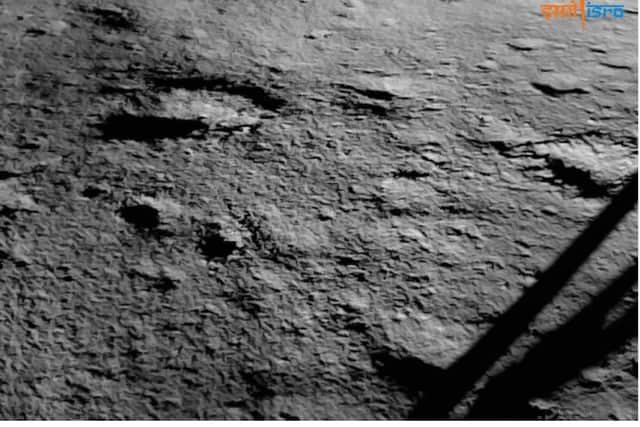Chandrayaan -3: India's lunar rover, Pragyaan, now walks on the Moon
and live on Freeview channel 276
India’s Chandrayaan-3 rover has taken its first steps on the lunar surface, after successfully touching down as planned on Wednesday evening.
India has made history by becoming the first nation to land near the lunar south pole.
Advertisement
Hide AdAdvertisement
Hide AdThe six-wheeled 27kg (60lb) rover – named Pragyan, which means “wisdom” in Sanskrit – rolled out onto the lunar surface at about 1.30am Indian Standard Time on Thursday (8pm GMT Wednesday), using the lander’s, Vikram, ramp, around four hours after Indian space agency Isro achieved the historic Moon landing.


It will now roam around on the Moon for one lunar day, which is about 14 days on Earth.
Pragyaan is carrying two scientific instruments which will try to find out what minerals are present on the lunar surface. These include the Alpha Particle X-Ray Spectrometer (APXS) and the Laser Induced Breakdown Spectroscope (LIBS).
APXS will analyse the elemental composition of the Moon’s surface and assess the composition of elements like magnesium and aluminium in lunar soil around the landing site.
Advertisement
Hide AdAdvertisement
Hide AdPragyaan will communicate only with the lander which will send the information to the orbiter from Chandrayaan-2 - which is still circling the Moon - to pass it on to the Earth for analysis.
Pragyaan’s wheels are also designed to leave imprints of Isro and India’s national emblem – the Lion Capital of Ashoka at Sarnath – on the lunar surface as it moves at move at a speed of 1cm per second.
“I once again congratulate the ISRO team and all fellow citizens for successful deployment of Pragyan-rover from inside Vikram-lander. Its rolling out a few hours after the landing of Vikram marked the success of yet another stage of Chandrayan 3,” said India’s president Droupadi Murmu on X, formerly Twitter.
The Moon is thought to hold important minerals but the main goal for Chandrayaan-3 is to hunt for water. Scientists say the huge craters in the south pole region which are permanently in shadow hold ice which could support human habitation on the Moon in future.
Advertisement
Hide AdAdvertisement
Hide AdIt could also be used for supplying propellant for spacecraft headed to Mars and other distant destinations.
Both the Chandrayaan-3 lander and rover are set to conduct science experiments on the Moon at a total cost of about £63m ($82m).
The mission would assess the Moon’s surface thermal properties using an instrument called Chandra’s Surface Thermophysical Experiment (ChaSTE), and one dubbed ILSA for measuring lunar seismic activity.
They would also conduct ranging studies and analyse the gas and plasma environment of the Moon.
Comment Guidelines
National World encourages reader discussion on our stories. User feedback, insights and back-and-forth exchanges add a rich layer of context to reporting. Please review our Community Guidelines before commenting.
